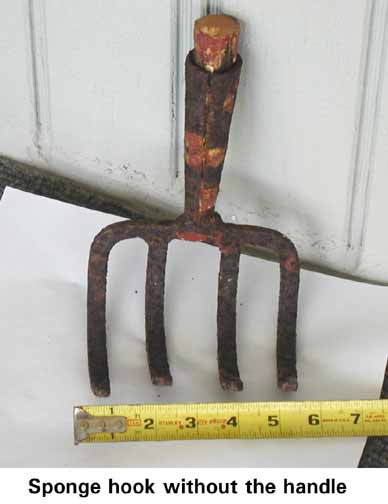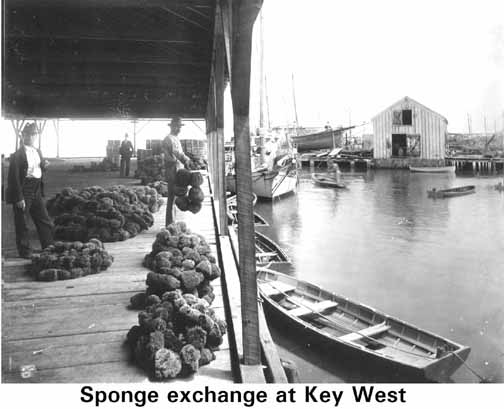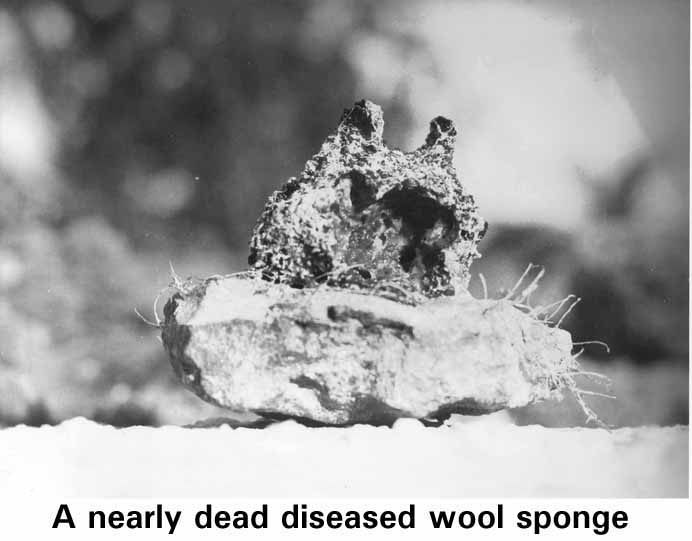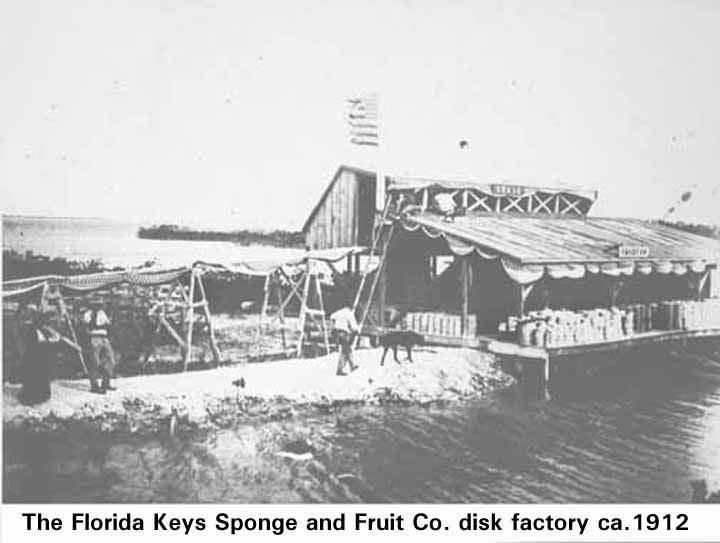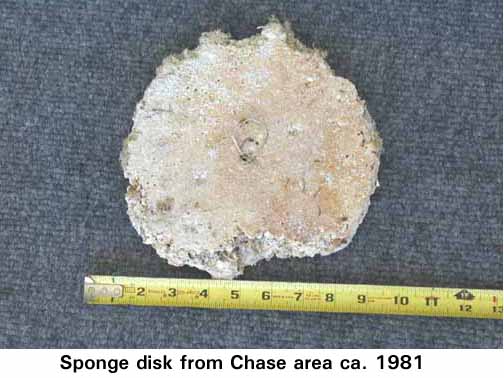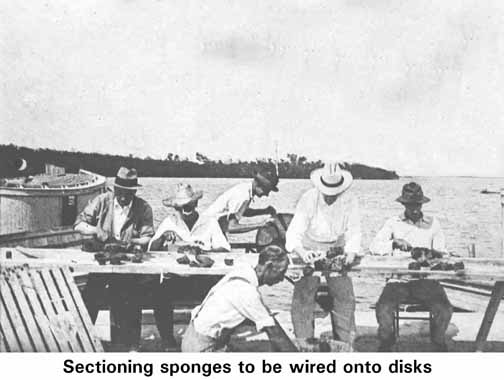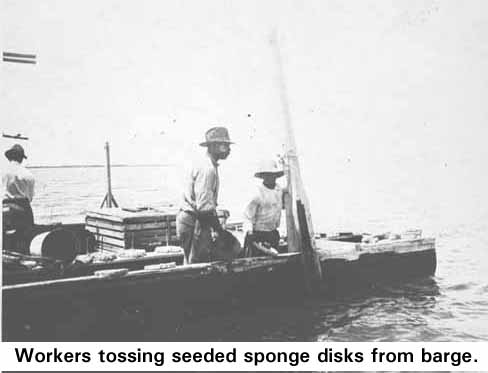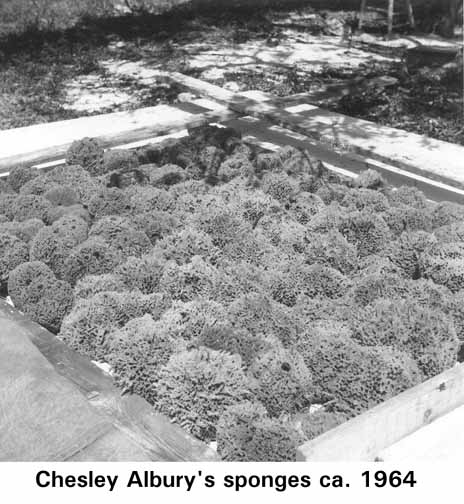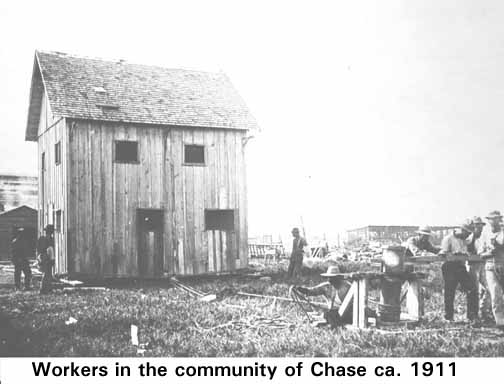Welcome to the Natural History of the Florida Keys From the first settling of the United States sponges were generally shipped in from the Mediterrean. In the mid-1800s, sponges were shipped from the Bahamas and as a trial a shipment was sent to Key West and its use was acceptable.
- Sponges -
By Jerry Wilkinson
It was not long before the industry snow-balled and grew to a $750,000 per year and 140 ships. Many were brought in the the Gulf coasts; however the local Keys sponges were considered a better sponge. The Keys spongers typically used a sponge hook, actually looks more like a narrow rake, limiting themselves to shallow water. The author's artifact is shown below. They measure about 5 inches across so as to be used as an measuring device.In the early 1900s, Greek divers at Tarpon Springs, Florida began harvesting from the deeper waters expanding the industry into deep water. It also took the so-called headquarters away from Key West. Above is shown the Sponge Exchange in Key West which was at the lower end of Elizabeth Street. Sponges have survived various blights, algae blooms and the human invasion. The wool sponge blight in the 1930s ( a diseased sponge shown above) practically destroyed the species. The Chase brothers, Charles and George, from England built the Florida Keys Sponge and Fruit Company (F.K.S. & F. Co.) on Upper Sugarloaf Key circa 1910 to experiment in the aquaculture of the sponge. The disk manufacturing building is shown above decorated for the arrival of Henry Flagler. The photos are from the Monroe County Public Library and were donated by George Cecil Bate, descendant of a major stock holder, Henry Bate. The disks were made of concrete with a hole in the center to pass a wire to attach the sponge cuttings. The author's artifact is shown above. Above is shown a team cutting live sponges into cuttings to be attached to the concrete disks. After attaching a cutting to the disk, they were taken out and "planted." Depending on the species it could take as long as three to four years before harvesting. Pouchers would usually harvest the sponges before Chase. Chase never sold a shipment other than samples. Above is shown three day's work of Chesley Albury of the Tavernier in March 1964. That year he sold his sponges wholesale at an average of $0.35 apiece in Miami.
Today, the three species taken for commercial use from over a 100 total species are the grass, wool and yellow. Year 2000 Florida state records show that of the approximately 670,000 sponges taken yearly come from Monroe County.The town of Chase had a postoffice and railroad depot. It population was about 100. When World War I broke out the supply of money from England was cut off and the property sold to Richter Perky, whose principal memorial is the Perky Bat Tower. The community was located in between the highway and the bat tower. —————————————-
Use Back Arrow to return to your previous reading location.
or
To return to the Natural History home page, Click HERE
